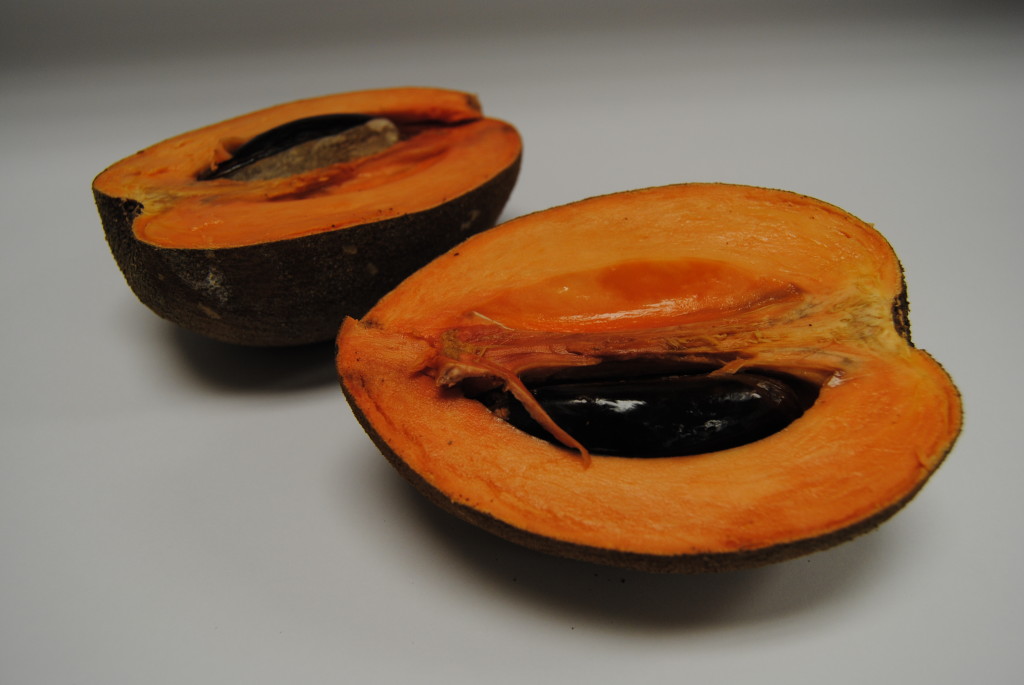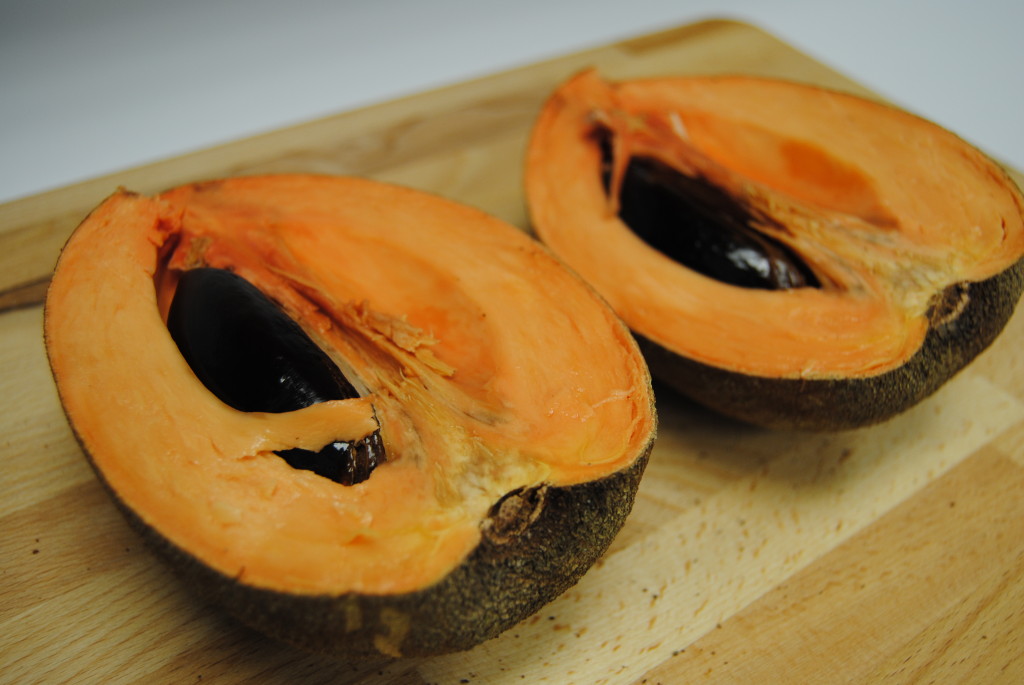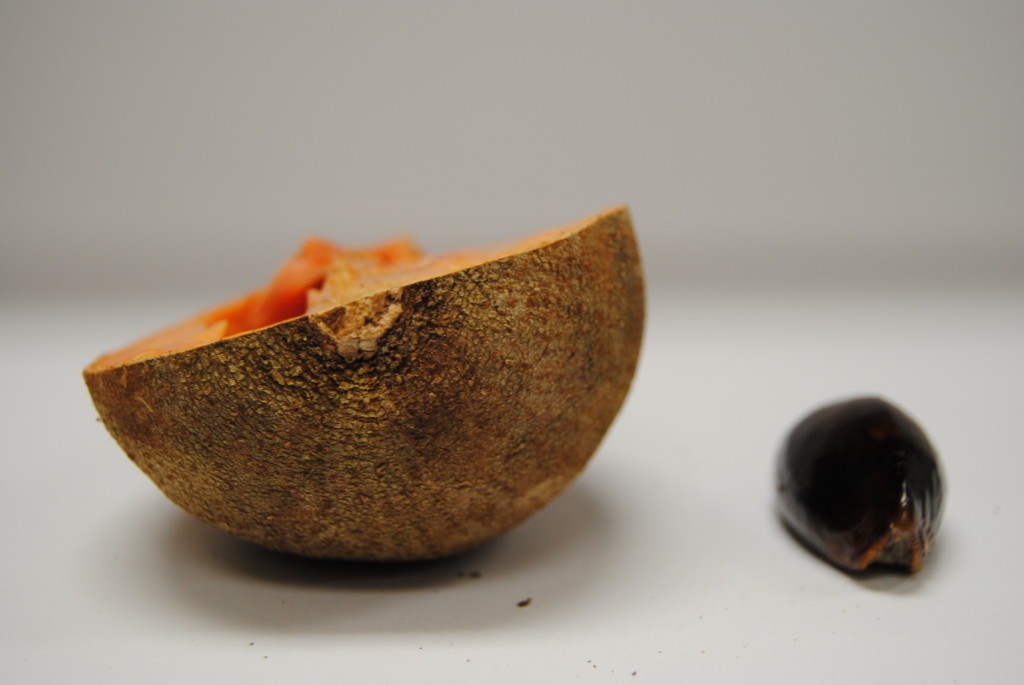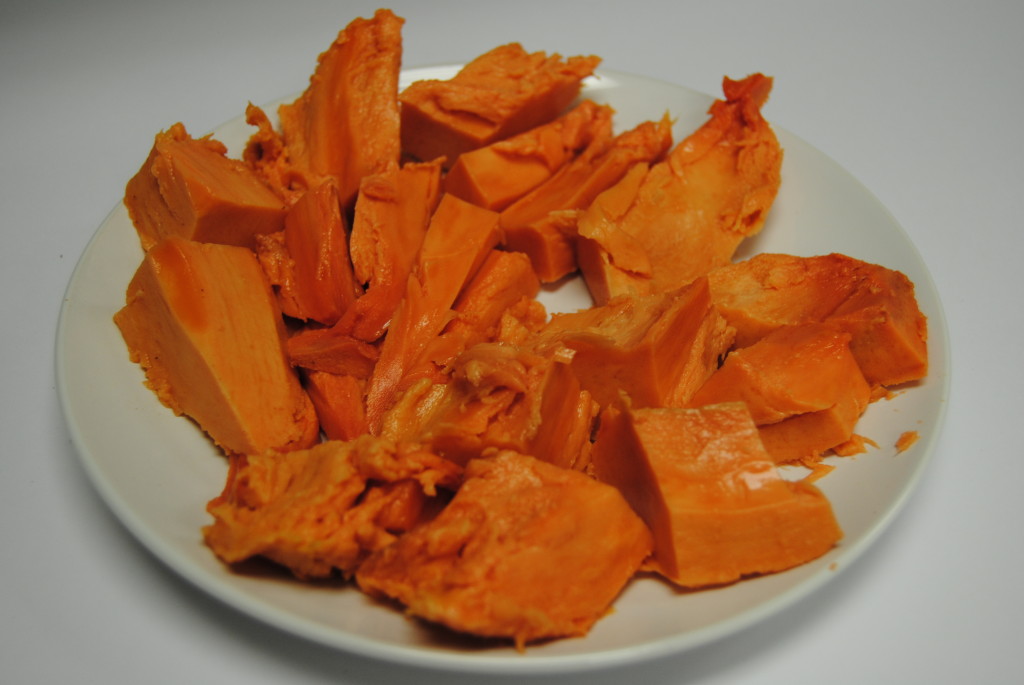
The Foodie Press: Mamey Sapote
Back to feed- Posted: 9/29/2016
- Categories: Discoveries at the Jungle
While on the hunt for something else entirely, we noticed an admittedly boring looking fruit with a name we weren’t quite sure how to pronounce: mamey sapote. The name itself is what initially caught our attention, actually (and it turns out it’s pronounced mah-may sah-poh-tay) .
Primarily grown in Hawaii, Central America, Mexico, and Cuba, the fruit has made it’s way to Southern Florida, where the Cuban American population clamors for a taste of home (it’s also the variety that’s available at Jungle Jim’s). It’s a fruit that’s incredibly popular on it’s own, but also as a base for ice creams, milkshakes, and smoothies, as it has a naturally smooth, creamy texture that lends itself well to those styles of treats. Available from June through September, we were so excited to come across this fruit before having to wait until next year to try it!
Written descriptions liken it’s flavor to pumpkin and sweet potato, with notes of honey and cherry adding a bit more sweetness than either of those notable examples. Texture-wise, it’s described as having a starchy quality, but when ripe it’s smooth, making it easy to cut in half, remove the seed, and eat directly from the fruit itself. You’ll know you have a ripe one when the outer flesh is soft to the touch, and you’ll definitely know if you have an unripened fruit, as it’s almost coconut like on the outside (we think it looks like a shaved coconut, or a large, hairless kiwi – but that’s just us). Just be on the lookout for it to turn ripe, because once it starts, it happens quickly! Our fruit sat for about 3 days before starting to show signs of ripening, then on day 4, it was ready to go. We also recommend setting it on a plate or paper towel – despite it’s smooth appearance, it sheds quite a bit (nothing major, just little bits that look like super fine coffee grounds).
We were anxious to try mamey sapote for ourselves, so with only some basic information to go on, we dove in.
We cut the fruit vertically, around the large seed found in the middle, creating two equal halves. Removing the seeds – admittedly intimidating looking specimens due to their size – was easy, as they popped right out. Make sure your knife is sharp enough to penetrate the outer skin. It’s a bit tough, but after breaking through it becomes much easier to cut. Once the seeds were removed we were able to pay closer attention to the color of the fruit’s flesh, which was a muted pink, not quite salmon in complexion. It was darker than pumpkin, closer to a nice fall squash. Our fruit was just ripe enough, so the flesh of the fruit was easy to dig into with a spoon, as intended. For our purposes, we chose to scoop out the entire half, like an avocado, and chop up to share. Just run the spoon around the edge and slide it down along the outer skin. After a little coaxing, the larger piece fruit should pop right out (but may fall apart a bit, as it is rather soft).
Flavor-wise, this is a surprisingly sweet fruit. Over-ripe and it might be too much, but catching it when we did – about 4 days after picking up when it was solid, without any give when pressure was applied – meant that we were able to experience some surprisingly sophisticated flavors and textures. There’s a natural, honey-like sweetness, and it lingers for quite a while. There was no bitterness to be found, and each piece was just as rich and flavorful as the last. Texturally, it does have a lot in common with avocado, but is much less dense. It’s easy to see why it’s so popular an item in ice creams, shakes, and smoothies. We have to imagine that half of this fruit would be pleasantly filling, making for a great breakfast or late afternoon snack.
Not only is mamey sapote a particularly tasty regional fruit, it’s one that’s actually packed with nutritional value (which seems to be a bit of a developing theme for us at TFP). Naturally high in vitamins A, B, C, and E, it even has a little potassium to add to the party, and is considered a heart healthy food due to its soluble fiber content. We like things that taste good, of course, so when they’re good for us, we consider that a pleasant added bonus!
This is a fruit that we were quick to fall in love with and want to share with others (some may have made their way home with us already). It was certainly great on its own – we recommend trying everything as it is at first, especially fruits like mamey sapote – but wow, are we curious about how it tastes in some desserts. Alas, that is a post for another time…







